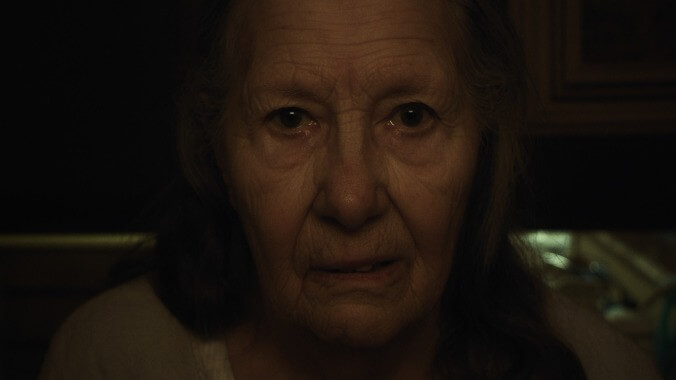Supernatural or psychological, the slow-burn horrors of Sator are difficult to shake


The slow-burn horror movie Sator has an interesting backstory. As writer-director Jordan Graham told it at the 2019 Brooklyn Horror Film Festival, the project was initially built on an entirely different narrative. Some 100 days into the shoot, his grandmother, June Peterson, who was there to make a cameo appearance in the film, spoke of her own paranormal experience—her supposed contact with a sort of guardian spirit called Sator. Graham, who comes from a family with a history of hearing voices, knew a better story when he heard it. In response to his grandmother’s bombshell, he tossed out his old script and wrote a brand new one. His routine demonic thriller had become possessed by a more compelling, unique family saga.
In the film Sator became, Peterson plays Nani, a fictionalized version of herself. She appears throughout in black-and-white video interviews, explaining the penetrative nature of the force that speaks to her, often through messages scrawled across blank pages, peppered with alarming words like “purification.” Nani takes all of this in stride, even as her daughter forges a vaguer and more catastrophic relationship with the entity. Eventually, it starts probing for an entrance into the psyches of the family’s grandchildren, including the grown Adam (Gabriel Nicholson), who hears whispers and sees strange things while target shooting in the woods of Northern California. When his dog goes MIA, it’s clear that the force is after him, too.
The opening scenes unfold less as a narrative than a series of ominous images, establishing a structural and tonal pattern. The camera drifts fluidly through Nani’s home, the images suggesting thought fragments, and the characters move ethereally, slow as molasses. Sometimes, Graham deploys a documentary-like shooting approach; other times he adds extreme insert shots of, say, a leaf or a pair of glasses on a table. Taken together, these multiple styles suggest a constant state of uncertainty and anticipation that things will only get worse—a reflection of the horrors of dementia, for those who have it and for those who care for them. Is the menace supernatural or psychological? Sator remains ambiguous on the subject, but not at the expense of its dread; by the time a conclusive answer arrives, the film drips with hellish sights.
Graham’s lovely use of grain emphasizes the importance of memory to this story. So, too, does the dialogue—the first lines of the film are from Nani, who recalls how she struggles to retain details about her life, while Sator has remained prominent in her mind. Some images are captured on what resembles film stock or VHS tape, to codify them as memories. As reality becomes increasingly malleable for Adam, Nani, and the rest of the family, the grainy interview footage becomes a relic of something historical and, to the mind, truthful. There’s no comfort, for characters or audience, in the hints that Sator may be a symptom of mental illness; “real” or not, the spirit is a harbinger of doom. Through both theme and texture, Graham approximates the slow phobia of Ari Aster’s Hereditary—the pervasive feeling that the dominos are tumbling and there is nothing that can be done about it.
Making the most of location, Graham fills his frame with panoramas of the woods, threatening to swallow their inhabitants whole. When Adam stands serenely atop a great fallen tree, his silhouette looks both majestic and insignificant, maybe cosmically—an expression of this clan of mortal, mentally disintegrating people, fighting to retain themselves. That’s what really makes the stomach drop: A lifetime of profound memories can disappear into the ether and the world will keep turning, won’t it? It’s the sort of vibe that permeates the work of H.P. Lovecraft, though Graham opts for mystic pagan aesthetics over tentacled creatures. The final non-human star of the story is his incredible sound work, a necessary counterbalance to the sparse dialogue delivered by introspective characters. From whispered voices to wet chewing to primal screams, every noise is calculated to punch through the frigid silence. It’s as close to a jump scare as the film offers—and that’s a good thing.
Sator does grow a little repetitive. Not every movie needs to be 90 minutes, even if that’s the industry standard. There is a phenomenal hour of storytelling here, with insistent atmosphere-building filling in the rest. But this is still a model indie. Finances necessitated that Graham cobble together his film over the course of several years—building a cabin, creating his sounds, editing around his grandmother’s presence, and hiring a skeleton crew only when he absolutely had to. The resourcefulness pays off: Sator is an effective exercise in what the horror genre does best, underscoring awful truths—in this case, dementia and generational trauma—by making them explicitly monstrous. What Graham understands is that there are few things scarier than the ultimate fragility of the human brain and everything contained within.